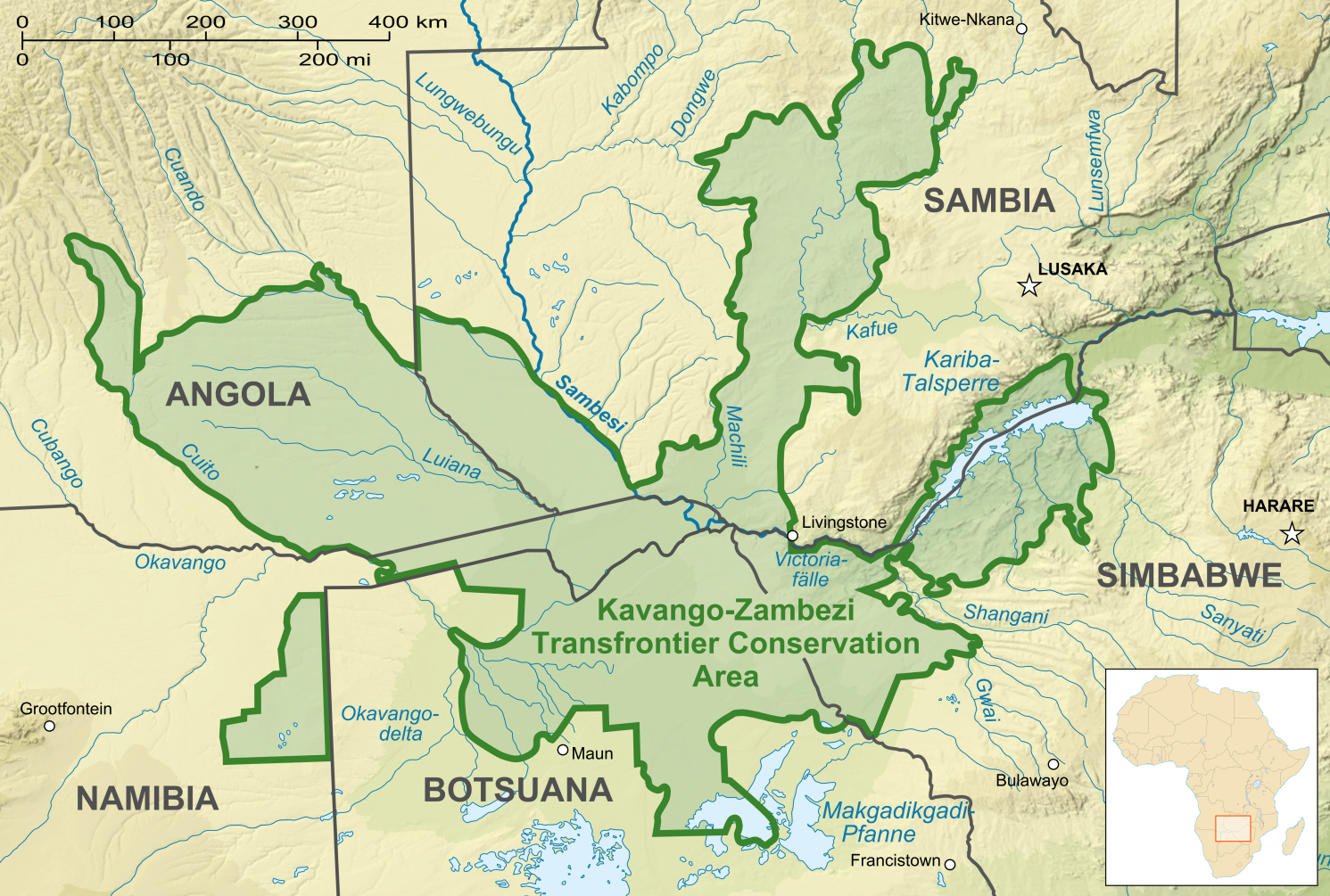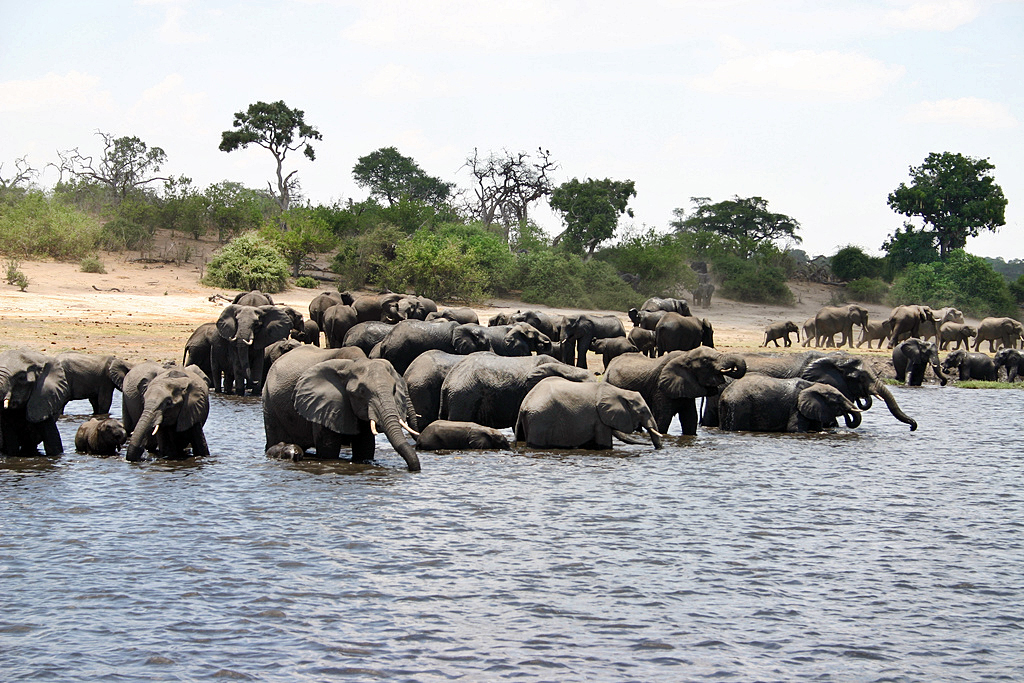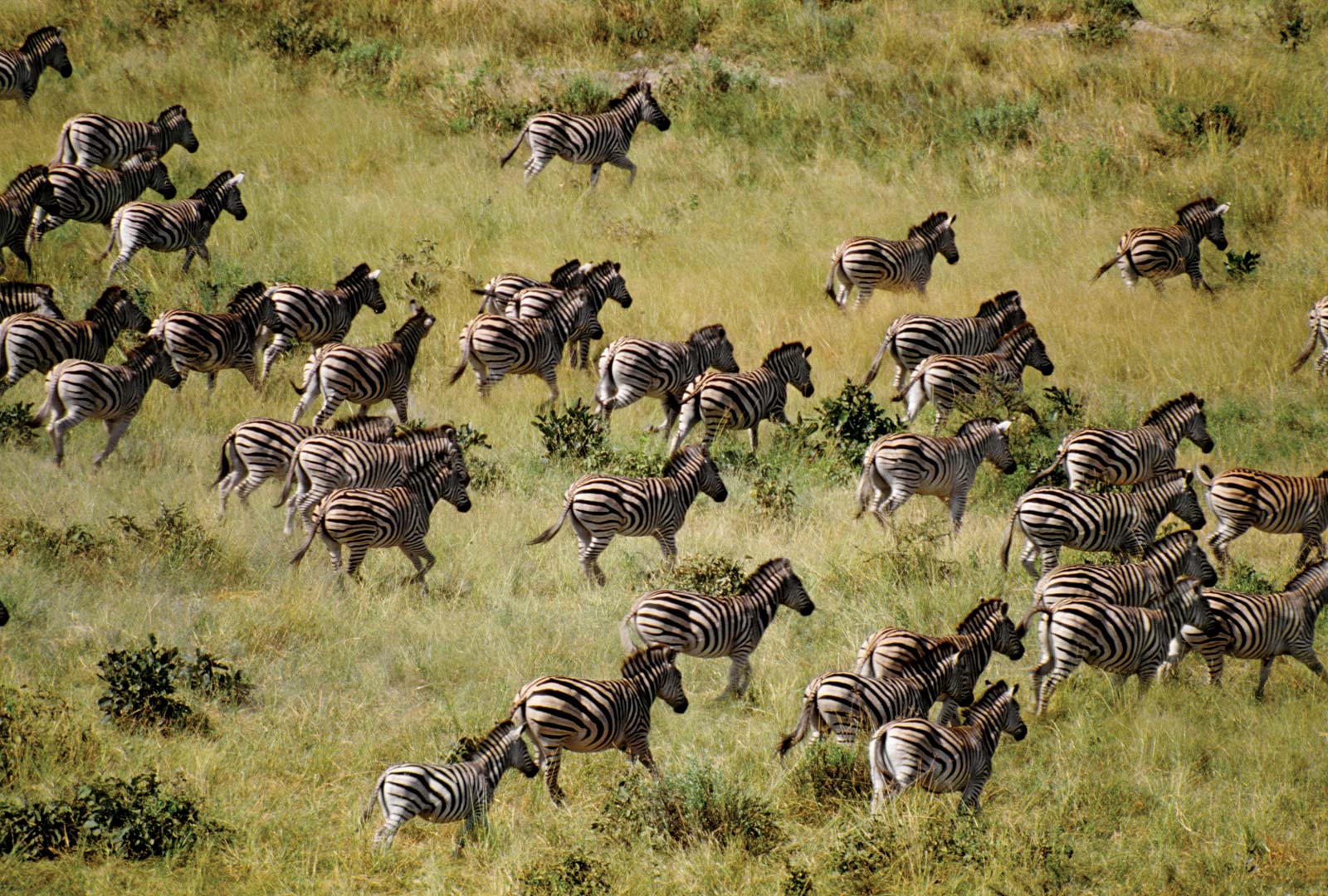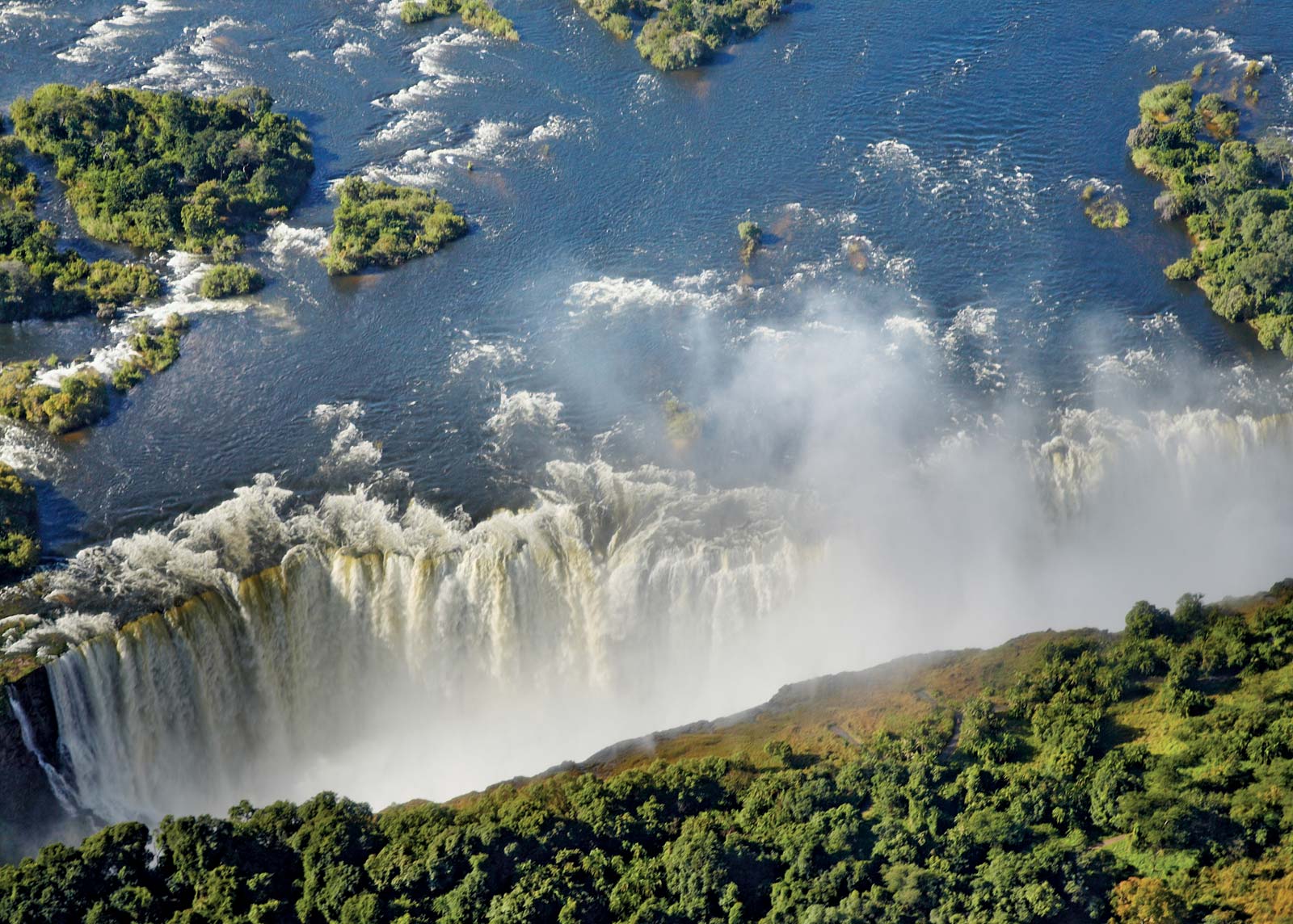Kavango–Zambezi Transfrontier Conservation Area (KAZA) is situated in a region of Southern Africa where the international borders of five countries converge.
It includes a major part of the Upper Zambezi River and Okavango basins and Delta, the Caprivi Strip of Namibia, the southeastern part of Angola, southwestern Zambia, the northern wildlands of Botswana and western Zimbabwe.

The centre of this area is at the confluence of the Zambezi Chobe Rivers where the borders of Botswana, Namibia, Zambia and Zimbabwe meet. It incorporates Chobe National Park, Hwange National Park, and the Victoria Falls.
Totalling 520,000 square kilometres, Kaza is deemed as the world's largest cross-border conservation park.

The initiative was created in cooperation with Peace Parks Foundation and the World Wide Fund for Nature. It developed from the Okavango–Upper Zambezi International Tourism Initiative (OUZIT) and the “Four Corners” Transboundary Natural Resource Management.
On 24 July 2003, the Ministers responsible for tourism in Angola, Botswana, Namibia, Zambia and Zimbabwe met in Katima Mulilo, Namibia and agreed the vision for the KAZA TFCA initiative.

In July 2006 SADC's endorsed the KAZA TFCA as a SADC project, and on 7 December 2006 the Ministers of Environment and Tourism of the five partner countries signed a Memorandum of Understanding at Victoria Falls, Zimbabwe, providing for work towards the establishment of the KAZA TFCA.

In November 2014, the governments of Zambia and Zimbabwe introduced a common KAZA Visa. Angola, Botswana and Namibia are expected to join the scheme.
According en.wikipedia











